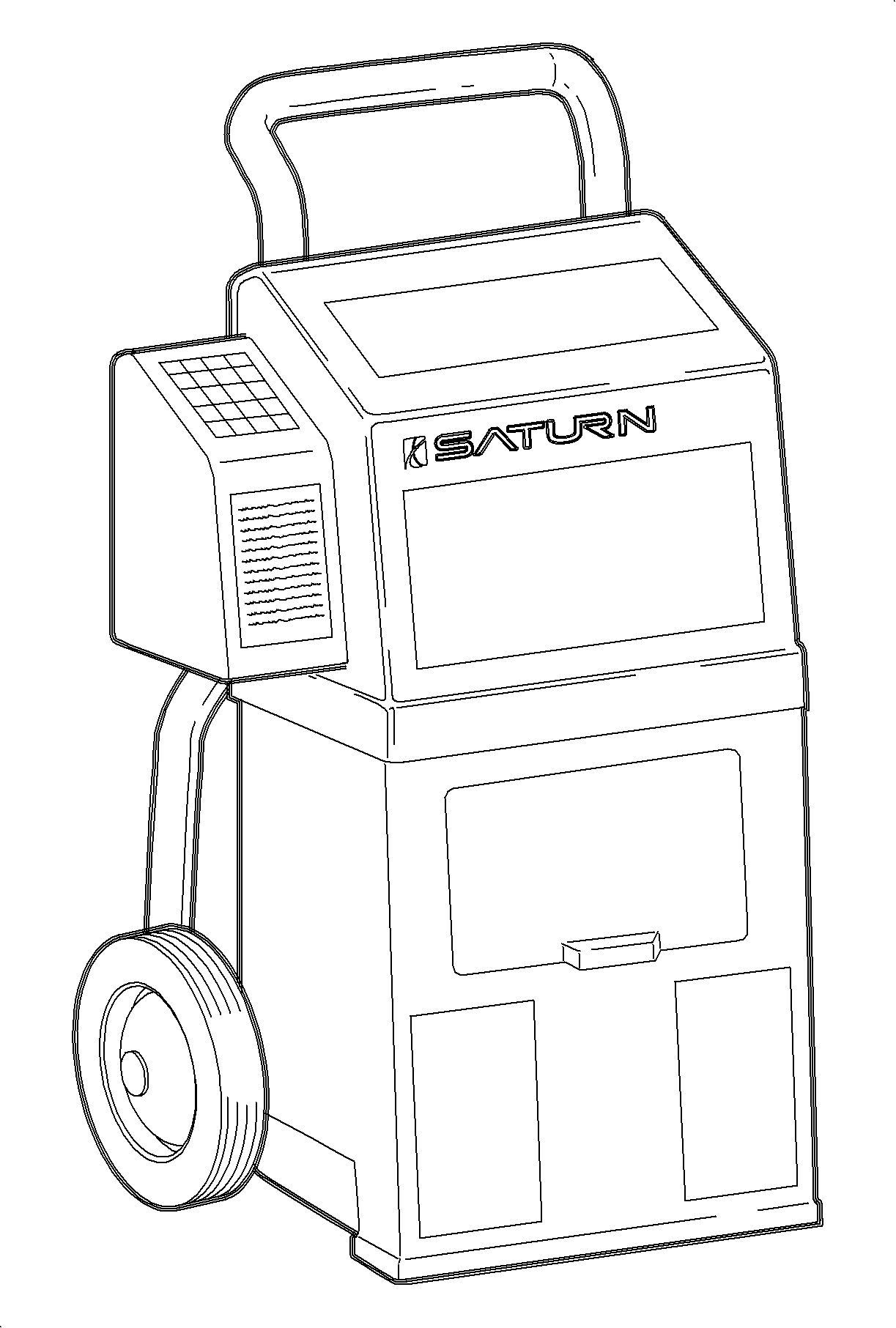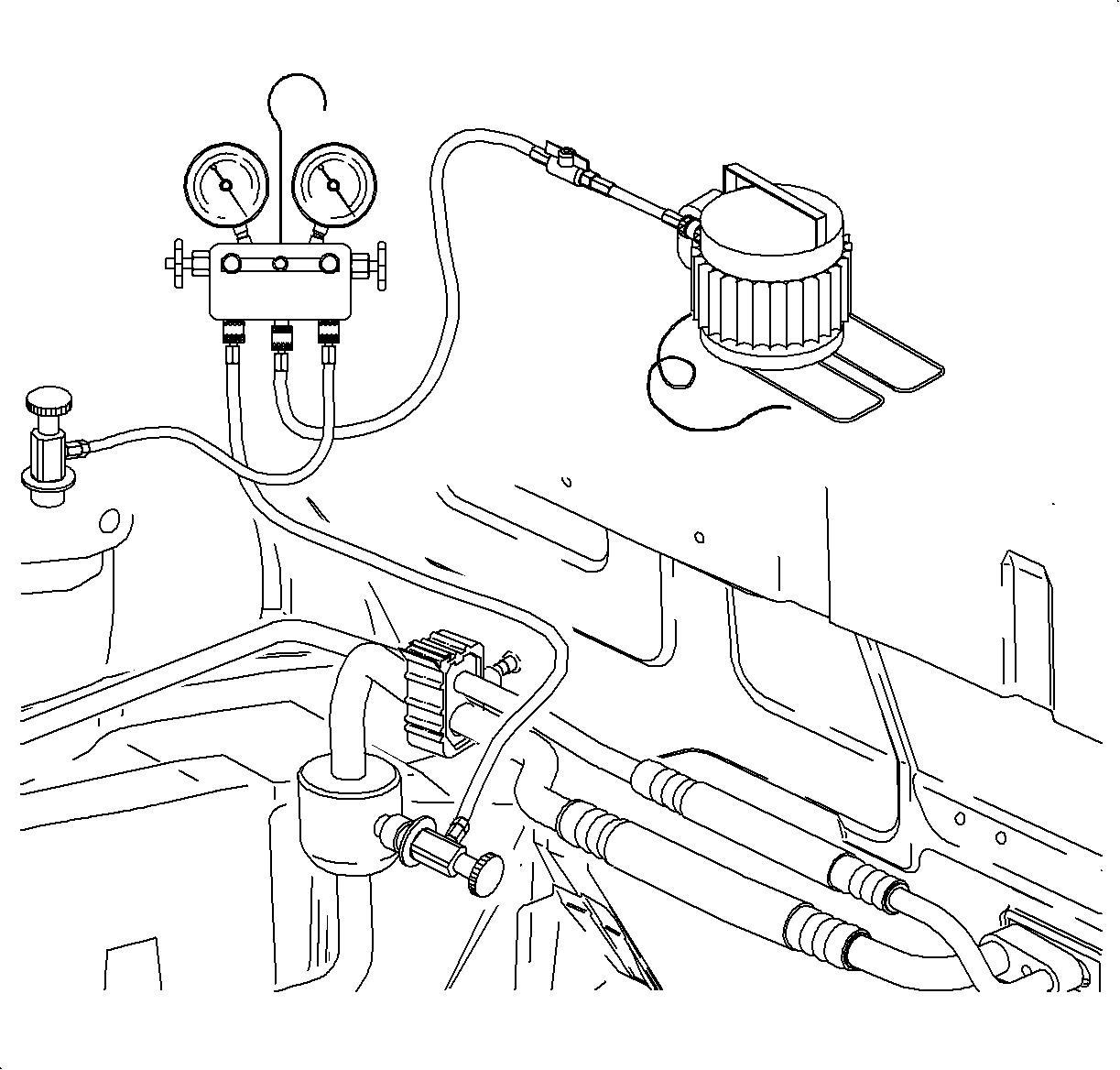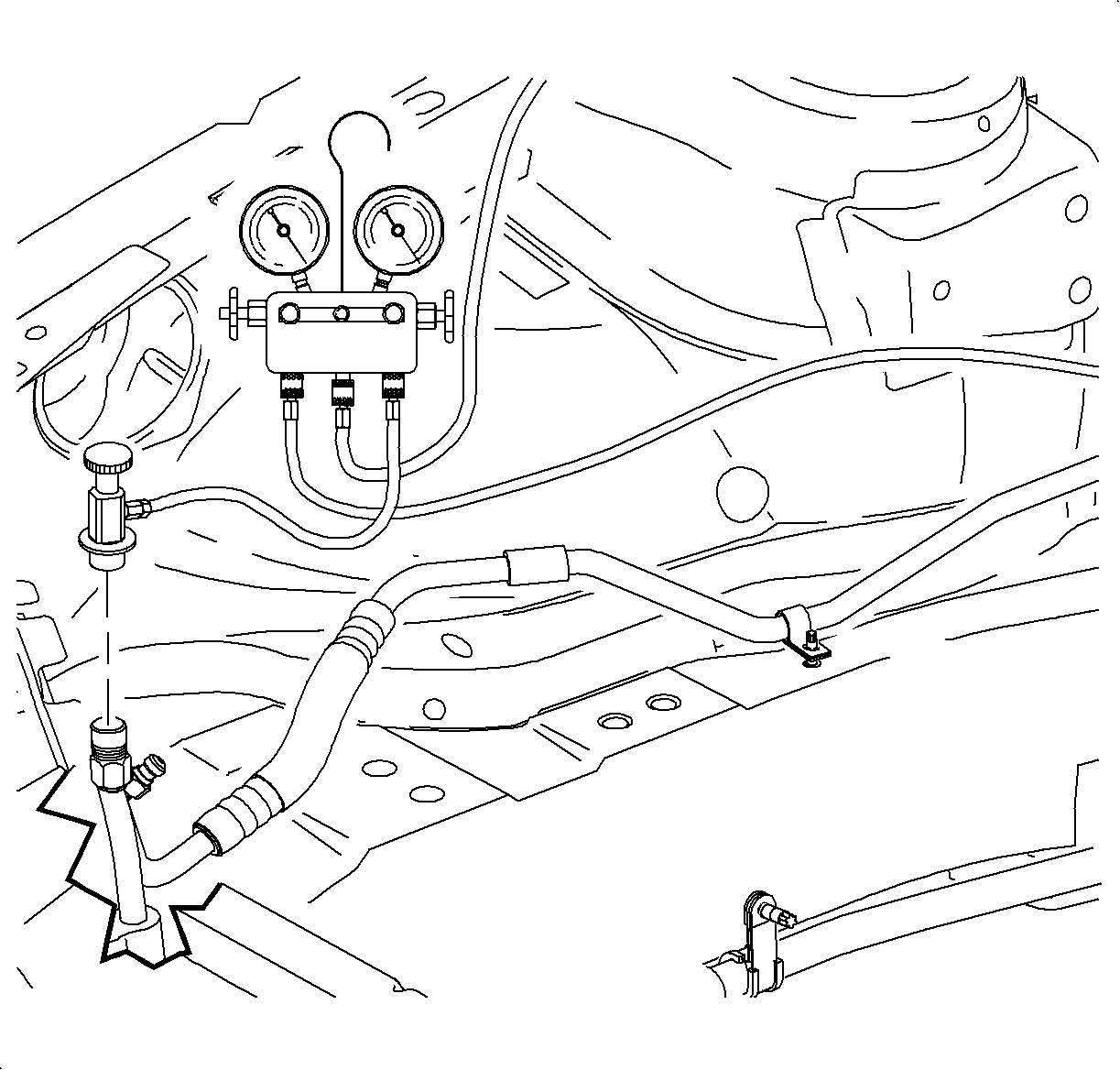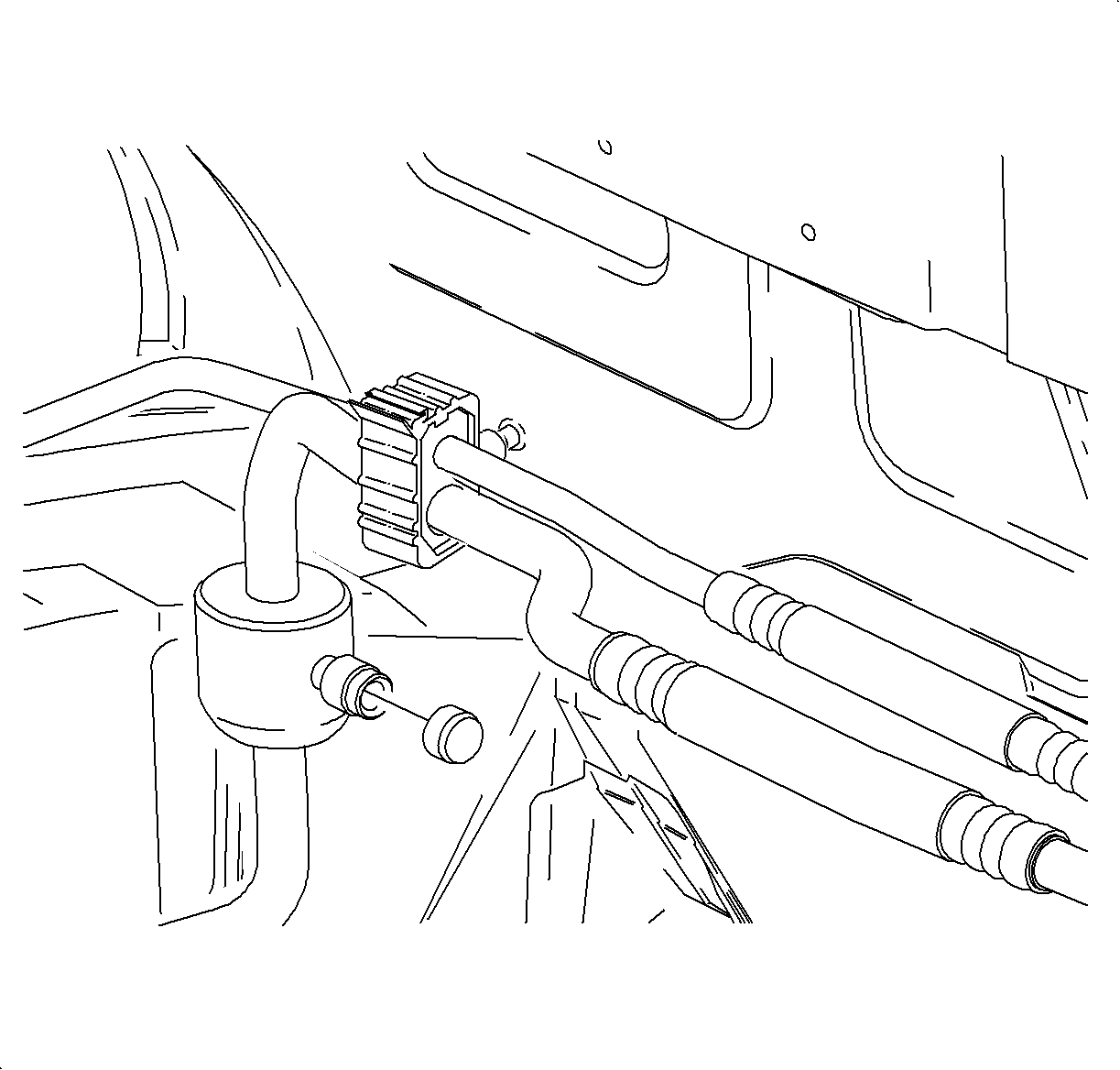Caution: Never charge the a/c system through the high pressure side of the system. Component
damage and personal injury could result.
Notice: Never use alcohol to remove moisture from the refrigeration system.
Damage to the system components could occur.
If the system has been opened for any repair, or the R-134a charge lost, the
system must be evacuated prior to charging.
Evacuation and charging is a combined procedure and all gage lines must be purged
with R-134a prior to charging.
A/C System R-134a Recovery

| | Important: Verifying the purity of the refrigerant with a refrigerant purity identifier
before recovery is recommended.
|
| • | Before removing or replacing any of the A/C refrigerant lines or components,
the refrigerant must be completely recovered. |
| | Notice: The air conditioning refrigerant and recycling station must meet UL standards
for moisture and contamination removal. Recovery systems which cannot meet these standards
are not approved for warranty repairs. Reuse of moisture or particulate contaminated
refrigerant will result in premature compressor and other component failure.
|
| • | The refrigerant system must be discharged using an air conditioning
refrigerant recovery and recycling system. Follow the manufacturers operating instruction
for system being used. |
| | Notice: Failure to check for residual oil from the previous recovery can result in adding
extra oil to the vehicle currently being serviced. This will also result in insufficient
oil in the system previously worked on and could possibly contribute to premature
compressor failure.
|
| • | Always check the A/C system for pressure with a manifold gage set
to determine if refrigerant is present in the system. Performing recovery on an A/C
system which is open to atmosphere as a result of a leak, would allow the recovery
station to pull only air into the tank. |
Evacuating the A/C System

- Connect refrigerant
recovery and recycling station to high and low side service ports. Pull vacuum on
system and evacuate for 20-30 minutes. Note vacuum gage reading.
- Close high and low side service valves.
- Watch low side gage for vacuum loss, 1-3 minutes.
| • | If loss is less than 3.38 kPa (1 in Hg) from level
recorded in Step 1, proceed to charging the A/C system. |
| • | If vacuum loss is greater than 3.38 kPa (1 in Hg)
from level recorded in Step 1, charge with 0.23 kg (1/2 lb) R-134a.
Leak test, repair leaks, and re-test. |
| | Important: Disconnect high side service valve from service port and check for vacuum loss
before leak testing.
|
Charging the A/C System

- Open R-134a source
valves and allow 0.50 kg (1.10 lb) of liquid R-134a to flow into system
through low side service fitting.
- As soon as 0.50 kg (1.0 lb + 1.6 oz) has been added
to system, start engine, set the mode control to vent, temperature lever to full cold,
blower speed on high, and push A/C compressor button to the ON position, A/C control
button light ON. Slowly draw in the remainder of the refrigerant charge 0.45 kg
(15.92 oz). Total system charge is 0.95 kg (2.0 lb + 1.5 oz).
- Run engine for 30 seconds to clear the lines and gages.
- With the engine running, remove the low side service valve from the suction
pipe service port.

Important: Make sure there is an O-ring seal inside of caps before installation because
cap is primary seal for A/C service fittings. Failure to tighten cap will result in
refrigerant leakage.
- Install protective caps on service ports and hand tighten.
- Turn engine OFF.
- Leak check system with electronic leak detector or equivalent.
- With system fully charged and leak-checked, conduct a functional and performance
test, refer to diagnostic flow chart.
Refrigerant Drum Method
Important:
| • | Refer to the emissions certification label, Saturn Power Module, for proper
amount of R-134a charge. |
| • | Verifying the purity of the refrigerant with a refrigerant purity identifier
before charging is recommended. |
| • | If the R-134a drum is used, place it on a scale and note the total weight
before charging. Watch the scale during charging to determine the amount of R-134a
used. |
- Connect the manifold gage set as follows:
- Low pressure gage hose to low pressure service port on suction pipe muffler
at inner right strut housing. Do not connect high pressure line to the A/C system.
- Manifold gage set center hose connected to R-134a source.
Charging Station Method

Follow charging instructions provided with the charging station in use. If the
equipment is not General Motors approved follow these exceptions:
| • | Do not connect the high side service valve to the air conditioning system. |
| • | Keep the high pressure valve on the charging station closed at all times. |
| • | Perform the entire charge procedure through the low side pressure service
port on the suction pipe. |
| • | Following these procedures will prevent accidental high side vehicle system
pressure being subjected to the charging station in the event an error is made in
valve closing sequence during compressor operation to pull in the R-134a charge. |





